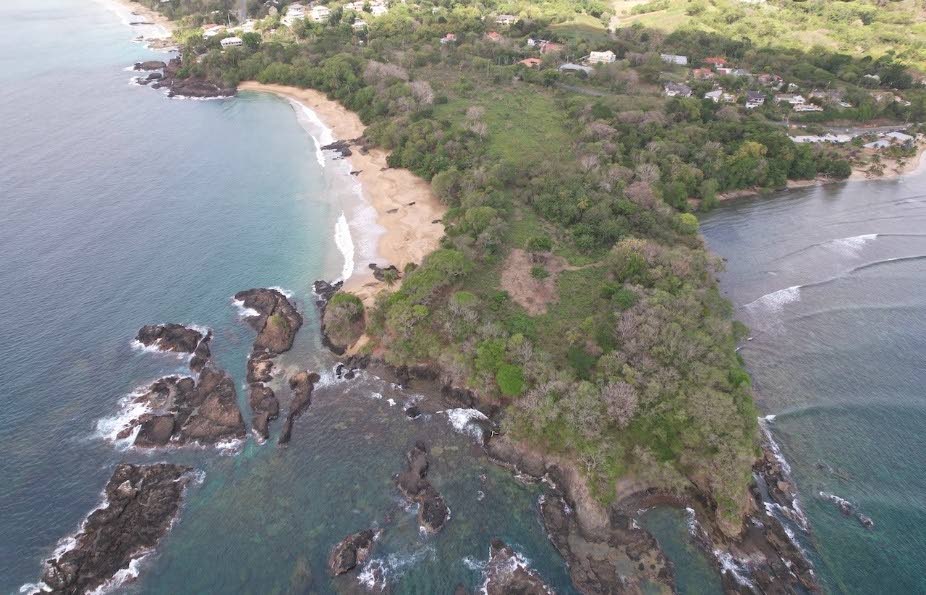Threat to pearl of Tobago

CONRAD MILLER MD
AS A frequent visitor and past attending physician at Tobago General Hospital at the Fort, starting in 1972, I and many others around the world were encouraged by the recent news about the reefs around Mt Irvine Bay. For the first time in many years, coral spawning has been observed and recorded by the Institute of Marine Affairs (IMA) on the Mt Irvine reef.
Unfortunately for endangered turtles and sea-life (and surfers at the world-famous Mt Irvine surf break) which could benefit from this discovery, the point – aka Rocky Point – at Mt Irvine is currently under threat by developers. A plan to build a hotel and a restrictive gated community has been proposed, along with securing a 99-year lease on this magnificent jewel of public land. (Only one-third of the leased land is proposed to be taken up by the hotel.)
For this project to proceed, stripping 70 per cent of Rocky Point’s vegetation would occur, including knocking down hundreds of 300-year-old trees. This would lead to erosion and soil run-off pollution into the bay and surrounding beach areas. Save Our Seas of Tobago, which has been monitoring this coastal environment for 20 years, warns:
“Suspended sedimentation [of eroded soil] in the water snuffs out sunlight and further smothers corals when it settles. This makes it hard for the microscopic algae in the coral to photosynthesise, leading to reduced productivity and growth and even coral death.”
Additionally, in these times of global warming, more intense storms, and sea-level rise, potential sewage contamination from man-imposed structures may occur, further damaging the turtles’ and other sea-life’s habitat. Hotel lights will disorient and scare away potentially nesting sea turtles, like endangered leatherbacks and hawksbills. Meanwhile, free access to Tobago’s perhaps most beautiful beach at Back Bay would be impeded for locals.
It should be known that female turtles lay their eggs in the sand at Back Bay up to ten times a year. Back Bay has been found to be a critical nesting habitat for endangered leatherback and hawksbill turtles along Tobago’s northwest coast. The July/August issue of the Caribbean Beat airline magazine reminds us that “the islands [of TT] have become a focal point of leatherback conservation globally…Trinidad and Tobago has become the most important nesting ground in the Western Hemisphere and the last great hope for survival of leatherback populations in the NW Atlantic.”
The loss of Rocky Point for a nesting home, whereto female turtles “travel thousands of miles back to the shorelines on which they were born to begin the cycle of life again once more,” would be tragic for a species that has been around for 100 million years. (Mankind has only been populating the planet for a mere 300,000 years.) Should the leatherbacks become extinct, knowing they have been declared an endangered species, would be an unacceptable catastrophe for mankind’s stewardship of them and our interdependent balance of nature.
Also, any pollution, or possible alteration of the coastline by developers, could threaten what is one of the world’s finest surfing waves. When swells rap around Mount Irvine Bay point, they often break “perfectly,” in that the wave never breaks in front of itself once the breaking begins.
Families of turtle watchers, snorkelers, divers and visiting surfers who return year after year, from all around the globe, feed the local economy in especially northwest Tobago as they pursue their passions.
Historical, environmental and surfing organisations have assembled a national coalition – entitled the Rocky Point Foundation – to protect this fragile pearl of Tobago’s northwest coastline for open use by all future generations. Its members have suggested other sites on Tobago that could be more suitable to the developers’ goals. In addition, they are campaigning to make Rocky Point a national heritage park, preserved forever for the people of TT and their descendants to utilise.
As David Achong, longtime surfer, contractor, diver and past president of the TT Surfing Association, living in the neighbourhood of Mt Irvine Bay for more than half a century, says about the proposed development: “Such a development on the scale proposed will have a serious impact on the West Coast by removing one of the last natural features that makes the island so unique. Nothing man-made has that quality of attraction.”


Comments
"Threat to pearl of Tobago"